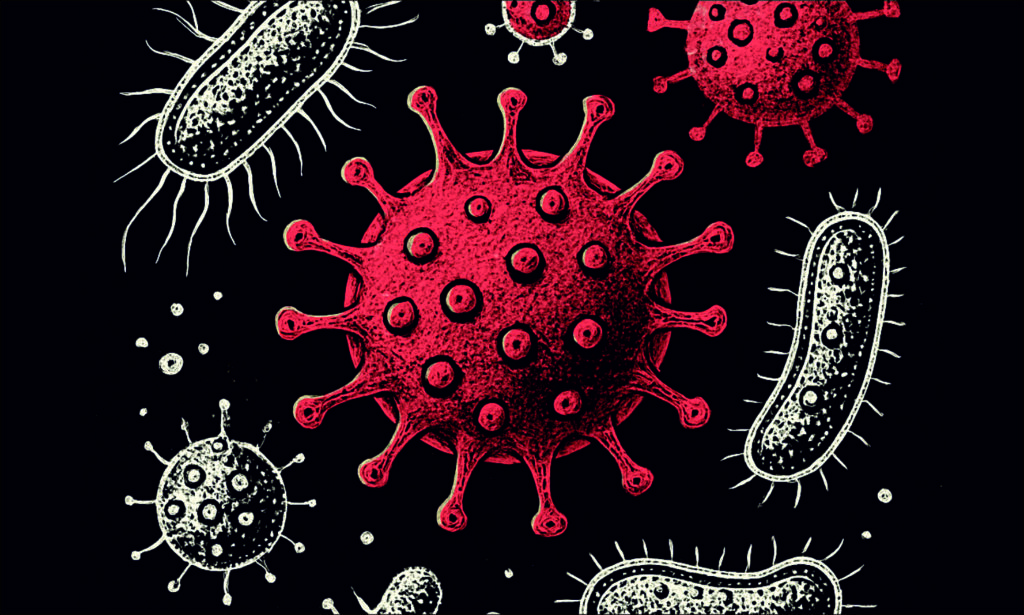Microbiology is the branch of science that studies microorganisms—tiny life forms invisible to the naked eye, including bacteria, viruses, fungi, protozoa, and algae. These microscopic entities are fundamental to life on Earth, influencing health, ecosystems, industries, and even the climate. Understanding microbiology is like opening a door to an invisible world that both sustains and challenges us.
🌍 The Scope of Microbiology
Microbiology is vast and interdisciplinary, connecting with medicine, biotechnology, environmental sciences, and agriculture. Broadly, it can be divided into:
- Medical Microbiology – Studies disease-causing microbes (pathogens) and develops treatments, vaccines, and diagnostic methods.
- Industrial Microbiology – Explores microbes in food, pharmaceuticals, enzymes, and fermentation industries.
- Environmental Microbiology – Examines the role of microbes in ecosystems, soil, water, and biodegradation.
- Agricultural Microbiology – Focuses on microbes that enhance soil fertility and crop productivity.
- Microbial Genetics & Biotechnology – Explores gene manipulation, genetic engineering, and synthetic biology.
🔬 Key Groups of Microorganisms
- Bacteria
- Prokaryotic, single-celled organisms.
- Exist in various shapes (cocci, bacilli, spirilla).
- Play roles in digestion, nitrogen fixation, and fermentation.
- Pathogens like Mycobacterium tuberculosis cause disease, while Lactobacillus promotes gut health.
- Viruses
- Acellular entities composed of DNA or RNA inside a protein coat.
- Require a host cell to replicate.
- Responsible for diseases like influenza, HIV, and COVID-19.
- Also used in gene therapy and vaccine development.
- Fungi
- Eukaryotic organisms, including yeasts and molds.
- Some are decomposers, recycling nutrients.
- Others cause infections like candidiasis or are beneficial in antibiotics (e.g., Penicillium → penicillin).
- Protozoa
- Single-celled eukaryotes, often motile.
- Cause diseases like malaria (Plasmodium), amoebiasis, and sleeping sickness.
- Algae
- Photosynthetic, aquatic organisms.
- Major producers of oxygen and food sources in ecosystems.
- Used in biofuel and nutraceutical industries.
⚕️ Microbiology in Human Health
- Normal Microbiota (Microbiome): Our bodies harbor trillions of beneficial microbes that aid digestion, strengthen immunity, and protect against pathogens.
- Pathogens: Microorganisms can also cause infections ranging from mild (strep throat) to life-threatening (sepsis, meningitis).
- Antibiotics & Resistance: Discovery of penicillin revolutionized medicine, but misuse has led to antimicrobial resistance (AMR)—a global health crisis.
- Vaccines: Microbiology is the foundation of vaccine development, from smallpox eradication to COVID-19 mRNA vaccines.
🌱 Microbes and the Environment
- Biogeochemical Cycles: Microbes regulate the nitrogen, carbon, and sulfur cycles, maintaining ecosystem balance.
- Bioremediation: Bacteria and fungi degrade oil spills, plastics, and toxic waste.
- Climate Impact: Methanogenic archaea produce methane (a greenhouse gas), while photosynthetic microbes reduce CO₂.
🏭 Industrial & Agricultural Applications
- Food & Beverages: Fermentation by yeast (Saccharomyces cerevisiae) produces bread, beer, and wine.
- Antibiotics & Enzymes: Microbes are biofactories for life-saving drugs and industrial enzymes.
- Agriculture: Rhizobia bacteria fix nitrogen, promoting plant growth. Mycorrhizal fungi improve nutrient uptake.
- Biofuels: Algae and bacteria are being engineered for renewable energy sources.
🧬 Emerging Frontiers in Microbiology
- Metagenomics – Sequencing entire microbial communities without culturing them.
- Synthetic Biology – Engineering microbes for custom functions (e.g., producing insulin, biodegradable plastics).
- CRISPR-Cas Systems – Derived from bacterial immune systems, revolutionizing genetic engineering.
- Microbiome Therapy – Fecal microbiota transplantation (FMT) and probiotics for gut-related disorders.
- Astrobiology – Exploring extremophiles (heat-, salt-, and acid-loving microbes) for insights into life beyond Earth.
⚠️ Challenges in Microbiology
- Antimicrobial Resistance (AMR): A looming threat that could make routine infections untreatable.
- Emerging Diseases: New pathogens (SARS-CoV-2, Ebola, Zika) highlight the unpredictability of microbial evolution.
- Biosecurity Risks: Potential misuse of engineered microbes for bioterrorism.
- Ethical Questions: Balancing innovation (e.g., genetic engineering) with biosafety and environmental risks.
🌟 Conclusion
Microbiology is not just the study of tiny organisms—it is the science of life itself at its most fundamental level. From sustaining ecosystems to shaping human health, from fueling industries to pushing the boundaries of biotechnology, microbes are indispensable allies and formidable adversaries.
As we continue to explore this microscopic world, microbiology holds the keys to solving some of humanity’s greatest challenges—disease, climate change, food security, and sustainable energy. The future belongs to those who understand the invisible.


